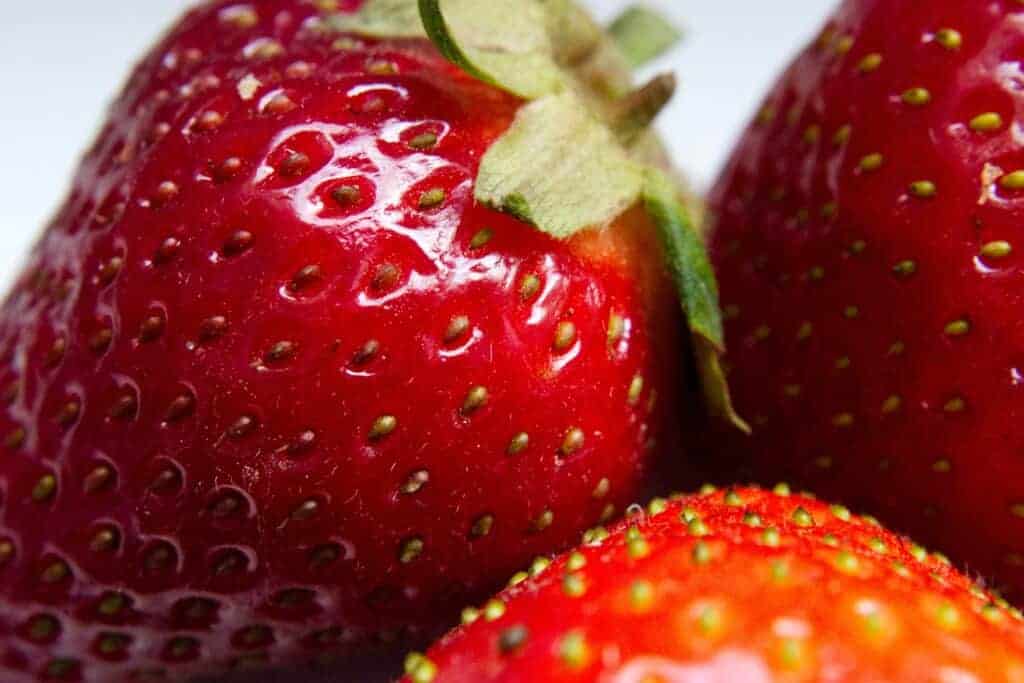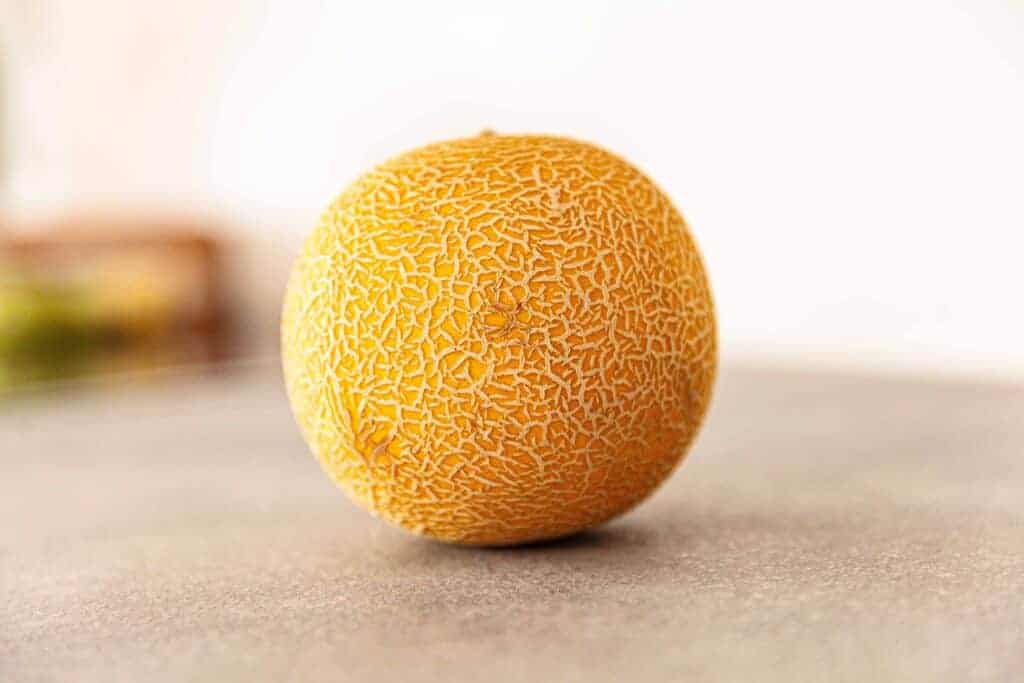Did you know Japanese melons could cost over $200? So what's special about Japanese fruits? Well, read on to find out why are Japanese fruits so expensive.
Most foreigners that visit Tokyo find it hard to believe that the Japanese would actually pay $200 for a melon or $5000 for a pair of mangoes.
If you haven’t been born and raised in Japan or don’t know much about the Japanese culture this may come as a surprise to you as well. But seeing these heavy price tags on fruits at large courts (deepachika) is a common sight for locals in Japan.
If you’re visiting Japan and you happen to visit one of these ritzy fruit shops, I bet you, you’ll find yourself ogling at the ¥20,000 flawless-looking melons, sitting on a bed of hay or silk cloth tied with a ribbon.
Or a pair of mangoes, costing ¥5,00,000, packed in luxurious gift boxes that literally look like the sunset! You’ll find strawberries that are the size of tennis balls that could go up to $4000 and a bunch of grapes could go up to about $105 (or more).

There’s a whole auction that takes place where only the perfect fruits are allowed to be sold. In 2019, Sapporo’s Yubari King melons were auctioned off for a whopping 5 million yen! Before you start calculating how much that is in dollars - it’s about $50,000!
And in the same year, a pair of perfect Miyazaki mangoes were sold in an auction for 5 hundred thousand yen! That’s about $5,000! In 2021, A Pair of Yubari King melons were auctioned at 2.7 million Yen, that's almost equal to $23,500. Phew, crazy right?
Now to answer your question - why are Japanese fruits so expensive?
Why Are Japanese Fruits so Expensive?
Several factors contribute to the sky-high prices of Japanese fruits. Firstly, land limitations force focus on quality over quantity, with meticulous hand-care for flawless fruits, perfect for their cultural significance as luxury gifts. Secondly, strict regulations on appearance and taste add to the cost. Finally, a reliance on domestic produce and high labor costs further bump up the price tag.
- Related: Why Japanese melons are so expensive
- Related: Why Japanese mangoes are expensive
Why are Japanese fruits so expensive from a historical perspective:
Japan’s age-old gift-giving culture involving fruits gave Japanese fruits a very high status in Japan. This is one of the reasons why Japanese fruits are so expensive.
This tradition can be traced all the way back to the 14th century when shogun (mentors) were presented with melons or tangerines by their students, the samurai warriors, to show their loyalty and respect.
As years went by, this tradition became an important part of the Japanese culture. So much so that, this tradition is still practiced in Japan till today. The Japanese present these luxuriously expensive fruits to their loved ones, bosses or mentors as a sign of gratitude, appreciation or deep respect.
It’s important to understand that the Japanese fruits are the vessel of this tradition because of which they hold this kind of deep value. And one of the ways something can be valued is if it comes with a really, really, high price tag.
And because this is common in Japanese culture, when a Japanese person receives a perfectly round melon, or a pair of half red-half orange mangoes, or a square watermelon - they know its worth and they understand its significance. So next time you’re in Japan and a Japanese person offers you a flawless-looking, super-polished fruit - know that you’re special to them!
Other than this buying these ridiculously expensive fruits are also a status symbol it’s not used for gifting purposes but also for decoration purposes! Yup, you read that right. In Japanese houses or establishments, when someone receives a super-expensive fruit as a gift, while some choose to devour it, some others also choose to display it - like a trophy!
But like I mentioned earlier, Japanese fruits are not only expensive because of its historical significance but also because of the time, effort and energy the farmers put in to grow these perfect fruits.
Japanese Fruits are Expensive Due to the Farmers' Dedication
The farmers put in a lot of efforts to create the fruits. And to do that they create special environments so that the fruits get the best care and grow perfectly.
Let’s dig a little deeper to understand how farmers grow these fruits.
White Jewel strawberries, for example, are much bigger than your regular strawberries and way sweeter. It has a beautiful white color with red seeds. The strawberries grow out to be white because they’re grown without sunlight. Due to this anthocyanin, the red pigment that gives your usual strawberry its color, is not activated!
Another famous example is the crown melons of Shizuoka. These melons are taken care of by the farmers like it’s their baby. They are grown in greenhouses whose temperatures are controlled so the melons are grown in a consistent temperature.

Other than this, only one melon is grown per vine. To protect these melons from sun damage, the farmers cover these melons with little hats! And to ensure that they are of the perfect shape, the farmers polish and massage these melons. Doing this also gives the melons its extra sweet taste.
Sekai Ichi Apples are another example of how perfectly Japanese farmers grow their fruits. These apples are priced around ¥2200. What’s special about this? These apples from Japanese are the largest variety of apples in the world! Each Sekai Ichi Apple is given personalised care by the farmer. Using a special tool, the farmer pollinates these by hand and also checks for any blemishes. The farmer also washes them with honey that makes these apples extra sweet!
And I’m sure you’ve seen the square watermelon! These are quite popular gifting option in Japan and costs about ¥21,500 (~$200).
It gets its shape as it is placed in a square wooden box when the watermelons are still small. It is also aligned carefully so that the stripes are formed correctly. These square watermelons are more for the purpose of decor than eating.
If you ever get the chance to try Taiyo no Tamago mangoes, please do not shy away! These are the sweetest, yummiest mangoes in the whole world. Literally translating to the egg of the sun, these mangoes are a beautiful ruby red and yellow. And when you cut it open, you will be mesmerized by its sweet orange flesh and fresh aroma.
To grow the perfect mango, the farmer in fact plucks out many of the other budding fruits so that a select few get the best nutrition and grow perfectly.
Japanese Fruits Are Considered a Luxury Adding To Its Price Tag
Japanese fruits are associated with luxury and are often considered as gifts for special occasions like weddings, special ceremonies, etc. as a token of gratitude. Japanese farmers especially grow these premium fruits with utmost care.
If you’ve watched this series drama called Doctor X where the surgeon was always gifted with the best-looking melons after he successfully performs surgery.
Japanese Fruits Are Subject to Seasonal Availability Increasing Its Costs
Most of the fruits are seasonal, for example, melons are summer fruits, apple and strawberries grows during the winter season. Due to the seasonal gap, supermarkets and farmers charge a high price when fruits are being sold. This is one of the main reasons why fruits cost so much in Japan.
Why Are Fruits So Expensive In Japan? : FAQ
What is the most expensive Japanese fruit?
Is fruit cheap in Japan?
Are all fruits expensive in Japan?
Why is fruit so expensive in Tokyo?
Also Read:



